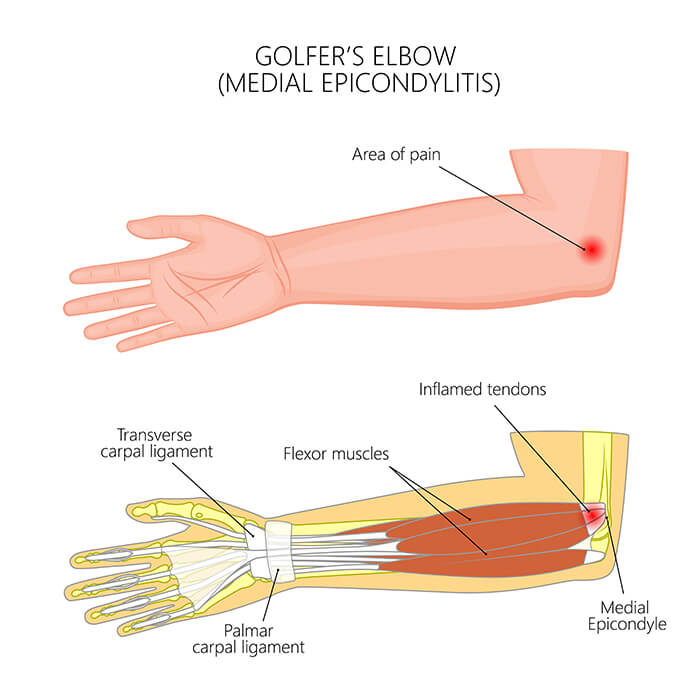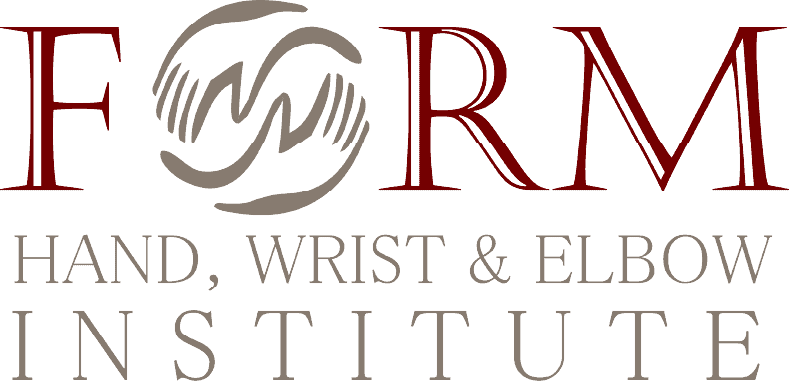Golfer’s Elbow
Medial epicondylitis or golfer’s elbow is tendinitis of the inside of the elbow joint due to repetitive arm and wrist movement. When you repeatedly flex your wrist, this repetitive action engages the muscles that pull the flexor tendon over the medial epicondyle (bony prominence on the upper arm bone). Consequently, the repetitive overuse of these muscles causes inflammation of the tendons, the connective tissue between the muscle and the bone, resulting in an overuse injury.
Causes of Golfer’s Elbow
Golfer’s elbow is caused by the chronic irritation of the tendons that cross over the medial epicondyle of the elbow. This irritation develops after repeated use of the group of muscles in the forearm that enable you to flex or bend your wrist down. When you flex your wrist, the muscles pull the tendon across the medial epicondyle, and the excessive rubbing due to repeated wrist flexion eventually causes microscopic tears in the tendon. This eventually leads to inflammation and pain.
There are many activities that can cause this damage, such as
- Sporting activities, including golfing, racquet sports, overhand throwing, and rock climbing.
- Poor ergonomics affecting the proper position of the wrist over the keyboard.
- Improper technique in sports activities such as weightlifting.
- Repetitive use of the forearm or repeated twisting of the wrist.

Symptoms of Golfer’s Elbow
Common symptoms of golfer’s elbow include
- Pain at the Inside of the Elbow
- Elbow Stiffness
- Numbness or Tingling in Fingers
- Hand or Wrist Weakness
Diagnosing Golfer’s Elbow
During your consultation, Dr. Besh will ask you questions about your medical history, how your symptoms developed, any occupational risk factors, and recreational sports participation. He will also conduct a physical exam of your fingers, hand, and wrist to determine the source of your pain or tenderness.
Dr. Besh may also order x-rays and an MRI to rule out other possible causes.
Treatment for Golfer’s Elbow
Treatment for golfer’s elbow can include physical therapy, anti-inflammatories, splinting, and stretching.
Specific exercises are helpful for strengthening the muscles of the forearm. Check out the video below for some exercises that you can do at home.
In some cases, cortisone injections may be suggested when other treatments are not effective. In the case of golfer’s elbow, surgery is rarely an option, but the best way to know for sure is to schedule an exam with Dr. Besh, who specializes in hand, wrist, and elbow conditions. Surgery is usually required when tendon damage is severe.
If Golfer’s Elbow is left untreated, the condition can worsen leading to chronic elbow pain and permanent grip weakness.
